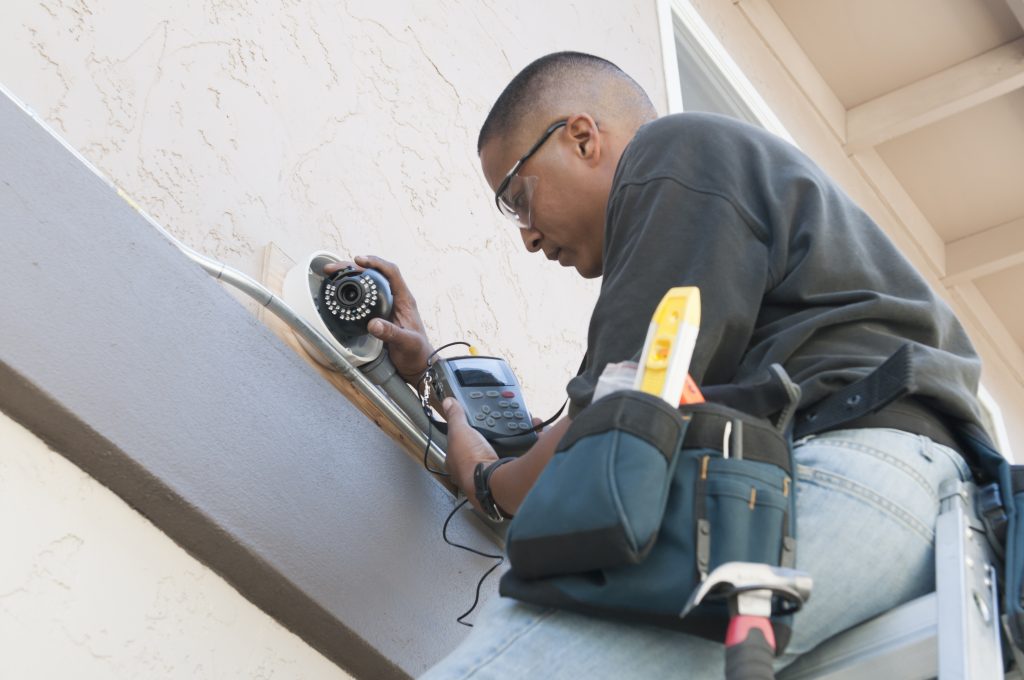
When it comes to ensuring the safety and security of your property, the placement of your security cameras is as crucial as the cameras themselves.
In this comprehensive guide, we delve into the strategies for dome camera setup, focusing on the best height for security cameras and how to install a dome camera effectively. These insights will not only enhance the security of your premises but also maximize the utility of your investment in security infrastructure in Western Canada.
Understanding the Best Height for Security Cameras
The best height for security cameras, particularly dome cameras, is a critical aspect of security planning. Positioning your cameras at the optimal height is essential in capturing clear and useful footage. Generally, the best height for security cameras is around 7 to 9 feet. This height provides a balance between wide coverage and detailed imagery. It’s high enough to be out of easy reach of vandals but low enough to capture faces and other important details.
When considering the best height for security cameras, factor in the surrounding environment. For instance, in areas where tall structures or heavy pedestrian traffic are present, adjustments in height might be necessary. It’s also important to ensure that the camera’s field of view is unobstructed, providing a clear line of sight to key areas of interest.
Effective Camera Setup
A successful dome camera setup hinges on strategic placement and orientation. When planning your dome camera setup, consider the primary areas you wish to monitor. Entry points, such as doors and gates, are critical locations. Your dome camera setup should provide a clear view of these areas to monitor everyone who enters or exits the property.
Also, consider the lighting conditions in your camera setup. Dome cameras, known for their discreet and unobtrusive design, should be placed in well-lit areas to ensure high-quality video footage. In low-light conditions, consider using cameras with night vision capabilities. The dome camera setup must also account for factors like weather conditions and potential obstructions to maintain optimal functionality.
How to Install a Dome Camera
Knowing how to install a dome camera correctly is vital for the effectiveness of your security system. Start by selecting the right location, keeping in mind the best height for security cameras and the areas you need to monitor. When you install a dome camera, ensure it is mounted securely to avoid tampering or damage.
The installation process involves mounting the camera bracket, connecting the necessary cables, and adjusting the camera’s angle for optimal coverage. When you install a dome camera, test the camera’s field of view, and make any necessary adjustments to ensure comprehensive coverage of the intended area. Regular maintenance checks are also crucial to ensure the camera remains in perfect working order.
Advanced Tips for Dome Camera Placement
Beyond the basic principles of dome camera setup and understanding the best height for security cameras, there are advanced strategies to enhance your security setup. When you install a dome camera, consider integrating it with other security systems, such as motion detectors or alarm systems, for a more robust security solution.
Additionally, when planning your dome camera setup, think about future scalability. Choose a location that allows for easy addition of more cameras if needed. It’s also wise to consider wireless options for easier installation and flexibility in camera placement.
Contact Tridon Communications Today
Effective dome camera placement is a blend of strategic planning, understanding the best height for security cameras, and knowing how to install a dome camera with precision. By following these guidelines, you can ensure that your property is monitored effectively, providing peace of mind, and enhancing overall security. Remember, a well-planned dome camera setup is a powerful deterrent to potential intruders and a crucial component of a comprehensive security strategy. For more information, contact one of our experts at Tridon Communication today.



